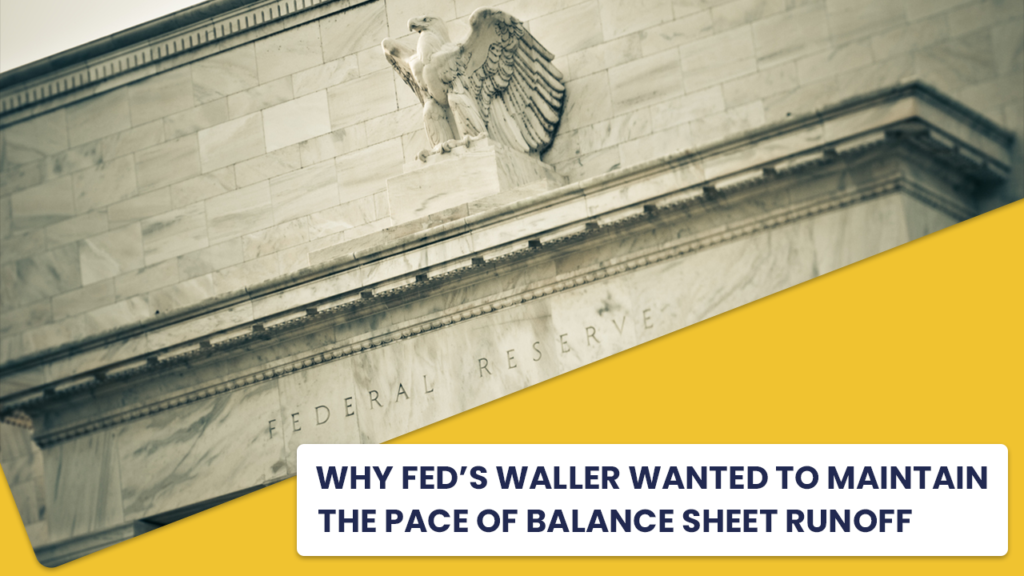Why Fed’s Waller Wanted to Maintain the Pace of Balance Sheet Runoff
Article published on March 24th, 2025 3:00AM UK Time

At the latest Federal Reserve meeting, policymakers decided to slow the pace of balance sheet reduction, adjusting the monthly Treasury runoff cap from $25bn to $5bn while keeping the MBS cap at $35bn. However, Fed Governor Christopher Waller dissented, preferring to continue the current pace of balance sheet decline, arguing that the financial system is not yet close to reserve scarcity and that a full plan for managing liquidity is still needed. On Friday last week he communicated why.
Why Waller Opposed Slowing the Runoff
1️⃣ Ample Reserves in the System
- Waller believes that reserve balances remain abundant, currently standing at over $3 trillion.
- He sees no immediate risk of liquidity shortages that would require a slowdown in balance sheet runoff.
2️⃣ No Signs of Reserve Scarcity
- According to Waller, money market indicators and discussions with banking institutions suggest that the banking system still has ample reserves.
- This indicates that liquidity is not yet constrained, meaning there is no urgent need to slow the balance sheet runoff.
3️⃣ Confidence in the June 2024 Slowdown Plan
- Waller supports the previously planned slowdown in balance sheet reduction beginning in June 2024.
- He believes this adjustment is already sufficient to prevent unintended market disruptions and that additional slowing is unnecessary at this stage.
4️⃣ Fed Tools Are Available for Liquidity Management
- Waller emphasized that the Fed has tools to mitigate short-term liquidity disruptions, reducing the need for preemptive action.
- If markets face unexpected stress, the Fed can respond dynamically rather than slowing runoff prematurely.
5️⃣ A Clear Plan is Still Needed
- Despite agreeing with the overall balance sheet normalization strategy, Waller believes the Fed still lacks a concrete plan for eventually pausing or stopping the runoff.
- He advocates for continued discussions on a structured exit strategy rather than immediate action.
Market Implications of Waller’s Stance
📊 If Waller’s approach was followed (continued balance sheet runoff):
- Higher Treasury yields, as liquidity drains from the system.
- Potential USD strength, as tighter monetary conditions support the currency.
- Pressure on risk assets, as reduced liquidity makes financing conditions less favorable.
📉 With the Fed opting to slow the runoff:
- More liquidity remains in the system, supporting equities and bonds.
- Lower Treasury yields, easing financial conditions.
- Possible USD weakness, as the Fed moves closer to a more accommodative stance.
Bottom Line
While Waller remains cautious about preemptively slowing the balance sheet runoff, the broader Fed committee opted for a more measured approach, prioritizing financial stability amid ongoing economic uncertainty. The decision signals greater flexibility from the Fed, but Waller’s dissent highlights the ongoing debate within the Fed

